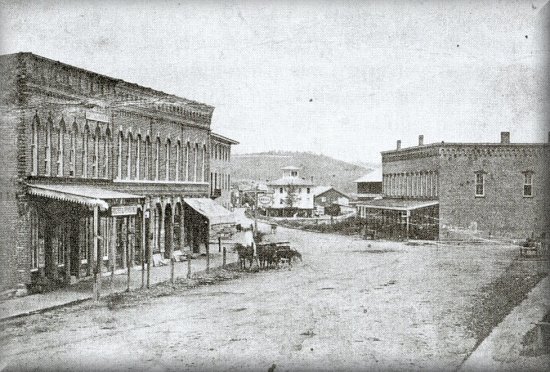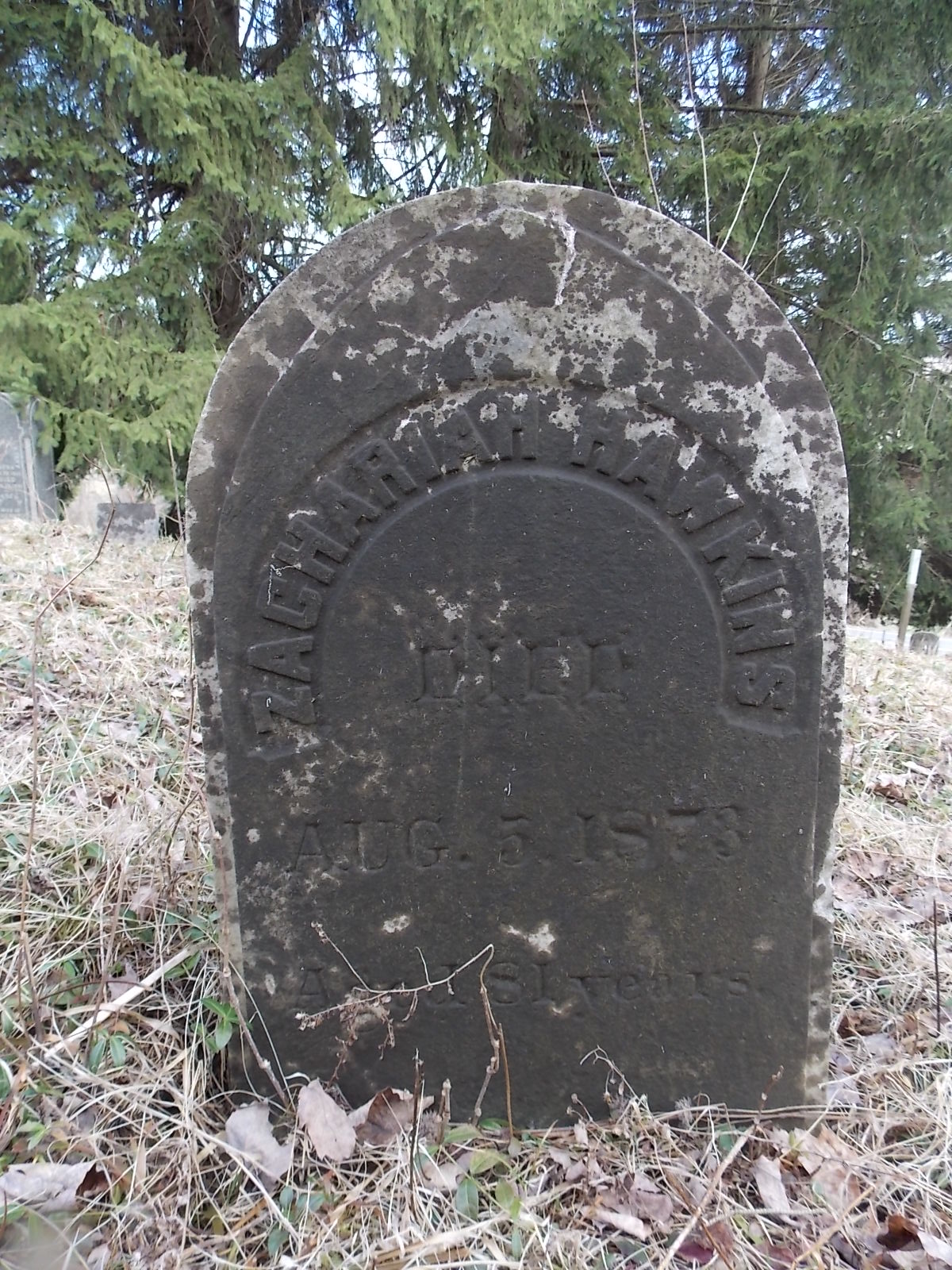A Respected Pioneer Settler: The Story of Zachariah Hawkins
The life of a pioneer family in our nation’s late colonial period was far different than the comfortable lives we live today. Those who built our localities, states, and indeed the entirety of the “Fruited Plain” are rightly deserving of honor and remembrance. These men and women have left a strong and vibrant heritage, yet one that I feel wholly inadequate to accurately and completely describe.
Such is the case of Zachariah Hawkins, my 4th great grandfather. He was born in New Haven, Connecticut February 1, 1791, but when he was twenty-one years old, he headed west to the wilderness of New York’s Southern Tier. Unfortunately, we know nothing of his inner thoughts and plans, nor do we know his reasoning for undertaking a journey to an unknown region. Why did he go? Had he heard stories of opportunity? Did he have a desire for adventure? These questions remain unanswered.
Another fascinating, yet unanswered question is, what route did young Hawkins take in order to arrive in Tioga County, New York, north of Elmira?
This is speculation on my part, but most likely his trek was the simple system of water, woodland trail, and semi-improved roads that was prevalent in the late colonial period of our nation’s history. In the early 1800s, New Haven, Connecticut was a small port city, so it’s possible he started the journey by boat west through Long Island Sound to the mouth of the Hudson River. Continuing by boat north along the Hudson, he would have arrived in Albany.
Departing Albany and heading west through the Mohawk Valley, Zachariah would have passed through Utica and then continued on foot or horseback along the newly improved Great Genesee Road. This road continued west to Canandaigua and eventually to Buffalo and had a long history of guiding settlers west to the Ohio country. If this was his chosen route, he likely would have arrived in the town of Geneva at the north end of Seneca Lake and then taken a boat south to the village of Watkins Glen. From there, it was a comparatively brief hike to the town of Catherine (later Veteran) to settle and begin his new life.
According to Chemung County, New York, The Biographical Record, when Zachariah Hawkins arrived in Tioga (now Chemung) County, New York in 1812, “this portion of the state was almost an unbroken wilderness, there being few settlers in the town of Veteran. The forests had been uncut, the fields untilled and the land was largely in its primitive condition…”

Zachariah Hawkins lived in the town of Veteran, close to Sullivanville
Zachariah Hawkins settled on land along Ridge Road, running north from Horseheads, farming the land and working as a blacksmith. It’s most likely that he met Grace Fanton once he arrived in the town of Catherine (later Veteran). She was born in New York, the daughter of another pioneer settler and they were married about 1813.
Three children were born to the couple…
Smith Hawkins born December 1814
Sarah Jeanette Hawkins born abt. 1817 (next in my generational line)
Lewis Hawkins born abt. 1820
These births were confirmed in the 1820 Federal Census, which listed two male children younger than ten, one female child younger than ten, and two adults. The New York State Census of 1825 included five members of the family, but also listed information about their financial standing. The Hawkins family had started to advance through hard work and they owned the following assets: 16 acres of land and livestock including 9 neat cattle (cows and oxen), 10 sheep, and 2 hogs. Also listed were 90 yards of linen.
The family remained the same size through the 1830 and 1835 census years, and it was clear that the Hawkins family had prospered through hard work and good fortune. Their assets listed in the New York State Census of 1835 included 40 acres of land, 24 head of cattle, 4 horses, 14 sheep, 11 hogs, 16 yards of cloth, 3 yards of flannel, and 85 yards of linen.
As the years passed, the “unbroken wilderness” of the early 1800s faded away as the area grew in population and prosperity. Zachariah was able to see the building of the Chemung Canal between 1830 and 1833. The new canal opened Chemung County to the rest of New York State and the entire world, as timber was moved by canal north from Elmira through the towns of Horseheads and Veteran to connect with Seneca Lake at Watkins Glen. From there, Seneca Lake connected to the Erie Canal. In exchange for timber and related products, all manner of .goods returned including finished products and exotic food from around the world.
Eventually the New York & Erie Railroad was built and supplanted the canal as the primary means of shipping goods. As a result, the Chemung Canal fell into disuse and deteriorated. However, remains of the former canal can still be seen if one is observant while driving along State Route 14 heading north from Horseheads and in other places.
Years went by. Work continued, the Hawkins children grew into adulthood, followed by the arrival of grandchildren. In 1847, Grace passed away at the age of 52 and was buried in the small Gearhart Cemetery near Sullivanville.
Within a year of Grace’s death – possibly July 14, 1847 – Zachariah married Margaret. There are few facts available about Margaret’s earlier life, but she was born about 1810 in New York and her maiden name was Lindsey.

A place that Zachariah Hawkins surely was familiar with
Zachariah grew older and eventually his health began to fail. His son Smith Hawkins stated, “He had been in poor health for quite a number of years and ten or twelve years before his death he had been subject to epileptic fits. The frequency of these fits has varied from six weeks to three months during the latter part of his life.” Even the strongest of men begin to feel a decrease in strength, the effects of advancing age, and declining health.
Zachariah Hawkins died on August 5, 1873 and was buried in the VanDuzer Cemetery near the hamlet of Sullivanville. He lived a fascinating life during the time of our nation’s early westward expansion, leaving behind a great heritage for his descendants. A final thought about him, taken from The Biographical Record:
“He lived to be eighty-two years of age and was a venerable and respected man, whose worth as a pioneer settler was widely acknowledged.”

© Jeffery J. Michaels / Plain English Publications 2019
(Quotations allowed with attribution to this blog)
References:
Chemung County, New York, The Biographical Record.
S.J. Clarke Publishing Co. – 1902. Pages 315-316.
Ghosts of the Past: The Chemung Canal. Life in the
Finger Lakes. Githler, Charley. Summer 2012.
1800 Federal Census: New Haven County, CT
1820 Federal Census: Catherine, Tioga County, NY
1825 New York Census: Veteran, Tioga County, NY
1830 Federal Census: Veteran, Tioga County, NY
1835 New York Census: Veteran, Tioga County, NY
1840 Federal Census: Veteran, Chemung County, NY
1850 Federal Census: Veteran, Chemung County, NY
1855 New York Census: Veteran, Chemung County, NY
1860 Federal Census: Veteran, Chemung County, NY
1870 Federal Census: Veteran, Chemung County, NY
Cemetery Records: VanDuzer Cemetery, Sullivanville, NY
Cemetery Records: Gearhart Cemetery, Sullivanville, NY
Last Will & Testament: Zachariah Hawkins
Estate Documents: Margaret Hawkins
